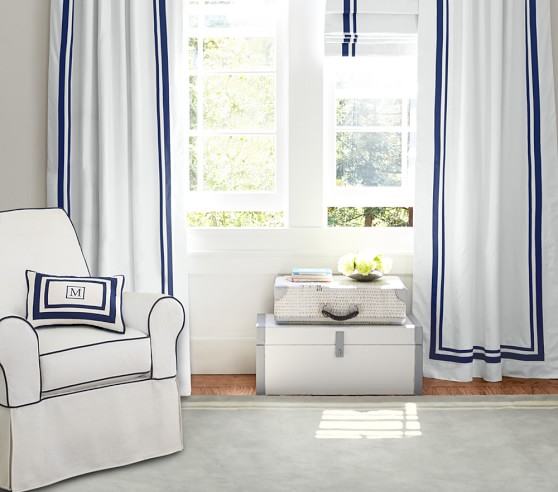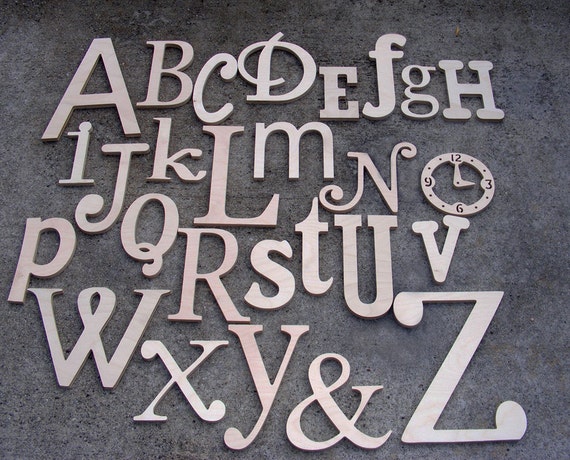I made one of these faux chenille blankets when I was pregnant with my son and used it as the backdrop for all his monthly baby pictures; despite the time-consuming process to make it, I wanted my daughter to have one of her own (#secondchildequality). It's a good thing I'm not planning to have a ton of kids because I'm not sure how many more of these blankets I have in me, but I LOVE the end result and hope it is something my kids will keep forever.
Let me begin by saying I am VERY beginner-level at sewing. I haven't sewn anything since my last pregnancy, so....nearly 3 years of complete inactivity. This blanket really only requires the ability to sew in straight lines, so if you can do even the basics on a sewing machine, you can do this!
- 1.25 yards patterned fabric
- 3 x 1.25 yards 100% cotton flannel (solid colors)
- 2 x 250-yard spools thread that matches the patterned fabric (plus a 3rd spool of thread if your quilt binding is a different color)
- 2 x 3-yard double-fold 0.875-inch-wide quilt binding
- Fabric marking pencil
- Yard stick
- Safety pins
- Straight pins
- Slash cutting tool
First, fabric selection: you will have one patterned fabric that will be the "front" of the blanket, and then 3 colors of cotton flannel will be used to make the faux chenille texture. The "front" patterned fabric can be whatever fabric content you want (mine happened to also be cotton), but the 3 colors of flannel MUST be 100% cotton in order for it to fray properly. The flannel doesn't have to be solid colored, but any pattern on it is not really going to show up once you cut the chenille, so solid is usually easiest and cheapest. If you're going to spend money somewhere, spend it on the "front" patterned fabric and get cheaper solid flannel for the chenille. My front fabric was $12.99/yard and the flannel was $2.99 yard, for reference. The flannel colors you choose should coordinate (or contrast) with the "front" patterned fabric. Similarly, the thread color should coordinate with the fabric (especially the "front" patterned fabric) so that it blends in and hides mistakes/wonky lines. The quilt binding can either match or contrast your other fabrics, depending on your preference.
For this blanket, I used a pink-patterned floral fabric for my "front" patterned fabric, and 3 varying colors of pink flannel for the chenille. I used pink thread and navy contrasting quilt binding (note: if you use contrasting, rather than matching, quilt binding, you will need a 3rd spool of thread in a color that matches the binding). By using 1.25 yards of each fabric, you should end up with an (approximately) 45-inch square blanket.
The first step is prepping the fabric. I do not wash mine in advance because I am brave/lazy like that and do not like trimming all the threads that come loose if you pre-wash. You run some risk of shrinkage in the finished product this way, but I did it anyway. Lay the "front" patterned fabric upside down (wrong-side facing up) on the ground. On top of it, layer the 3 solid-color flannel fabrics. The color on the very top (furthest from the "front" patterned fabric) is the color that will be most visible, so put your preferred fabric color on last. Use scissors to trim any uneven edges if your fabric doesn't line up perfectly.
Use 10-12 safety pins to pin the 4 layers of fabric together, since the fabrics will shift some while you are sewing. Since this is a project that will likely take several days to complete, I like to use safety pins instead of straight pins since they are more secure.
Flip your pinned fabric over and use a yard stick to draw a straight line with a fabric marking pencil from one diagonal to the other. This will be the first line you sew, and you will work your way outwards to the corner.
Finally - time to start actually sewing! You will go through many, many bobbins of thread while making this project, so I like to thread at least 3-4 bobbins at a time to limit the number of times I have to stop sewing to rethread bobbins. Make sure to sew with the "front" patterned fabric facing up, because the stitching on this side will be more visible than it will be on the back/chenille side, so you want to make sure you aren't bunching the fabric. Start by sewing a straight line from one corner to the other on the pre-marked line. This is the longest line you will have to sew, so they get shorter from here! Backstitch at the beginning and end of each line to avoid unraveling once you start cutting the chenille.
After completing the first line, shift the fabric to the right so that the right edge of the presser foot is aligned with the line you just sewed. I find it helpful to roll up the excess fabric to keep it from bunching too much against the machine. Sew another line, keeping one-presser-foot distance from the first line.
Keep doing this, sewing lots and lots (...and lots) of straight lines until you eventually reach the left-hand corner of the fabric. When you reach the corner...you are halfway done! Turn the blanket around (with the "front" patterned fabric still facing up, but moving the completed half to the right-hand side and the uncompleted half of the blanket on the left) and do the same thing for the other half of the blanket. If you run out of thread in either the spool or the bobbin mid-line, don't worry - just reload, backstitch, and keep going. There will be so many lines that it won't be noticeable in the finished product :)
Once you are done sewing lines, it's time to start cutting the chenille! You will want a slash cutting tool for this part - trust me! I can't even imagine cutting this many lines with scissors.
Place the blanket on the ground or flat surface with the flannel side facing up. You want to cut the 3 flannel layers in between each line WITHOUT cutting the "front" patterned fabric. I find it easiest to use a small pair of scissors to snip the flannel between each sewed seam to "start" the cut - it makes it easier for the slash cutter to do the rest of the work without having to pull too hard.
Then, stick the slash cutter under the 3 flannel layers (but on top of the patterned fabric) and push the tool, parallel to the ground, towards the other end of the blanket to cut through the flannel layers. Cutting 3 layers of flannel at once, many, many times (between each pair of lines) will dull the slash cutter blade quickly, so when it starts becoming more difficult to push the tool to cut the fabric, make sure to rotate the blade to reveal a "fresh", sharp section of the blade (if you don't do this and use a dull blade, you will eventually use so much force to push the tool that you will rip out a seam). You will also have to pick flannel lint out of the blade every few cuts to keep the blade from getting clogged up.

Once you have cut the flannel between all of the lines, use a yard stock to "square up" the edges of the blanket and trim off any excess fabric (since it likely shifted some during sewing), including the fabric selvage on the "front" patterned fabric. Don't worry if trimming involves cutting off some of the backstitching on the lines you sewed - the quilt binding will ensure that the seams don't unravel.
If you want your blanket to have rounded edges like mine, use a rounded object (I used a salad plate) to trace and then cut a rounded edge on each corner. Trim off any remaining loose threads.
The last labor-intensive step - the quilt binding! Use straight pins to pin the quilt binding around the outer edge of the blanket, making sure to sandwich all 4 fabric layers between the 2 sides of the quilt binding.
If your binding is a contrasting color, make sure to rethread your sewing maching with an appropriate thread color to blend in (my beginner sewing skills make sewing on the quilt binding the hardest part of the whole process, so I like to hide my mistakes as much as possible with thread that blends in!) Use your sewing machine to sew along the inner edge of the binding - as close as possible to the edge while still "catching" the binding on both sides of the blanket (I check the back side every few inches to make sure my seam isn't running off the binding). This part is very slow and steady for me, and involves a lot of seam-ripping and re-doing, especially when going around the rounded corners (but again....beginner-level skills).
Once you're done, double check the binding to make sure that there aren't any gaps in the seam all the way around. When you're satisfied that the edges of the blanket are fully encased in the quilt binding, it's time to wash! Wash the blanket (a regular wash cycle on cold water should be fine). Because I didn't pre-wash my fabric before sewing, I use a Shout Color Catcher sheet to soak up any dyes that might run during washing. Make sure you wash the blanket BY ITSELF - the cut flannel will generate a huge amount of lint that you don't want sticking to other things in the same wash load!! Machine dry the blanket on low or medium heat; if you remember, clean out the lint filter halfway through the drying time because IT WILL BE FULL. Like, really full.
When the blanket is dry, admire all the flannel that has fluffed up into a soft chenille texture! You did it! It may be time- and labor-intensive, but the end product of seeing all those lines of chenille is worth it!


































